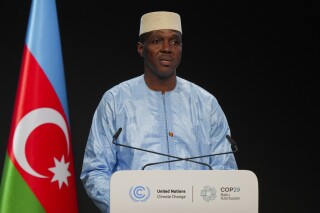
KANANGA (DR Congo), Feb 28 (NNN-AGENCIES) – “For me, the war is now over.” If words alone carry weight, there are hopes that a brutal conflict in Democratic Republic of Congo may draw to an end.
The words were spoken by Mado, a hard-eyed child fighter all of 12-years-old from the deeply-feared Kamuina Nsapu militia in central Kasai region.
Along with several dozen adults, the young girl marched out of the brush and into the town of Kananga, some 700 kilometres east of Kinshasa, where they surrendered their weapons.
There they laid down old rifles, machetes and good-luck charms at the governor’s feet following the surprising victory of Felix Tshisekedi who was elected president after December’s elections.
Like most of the Kamwina Nsapu fighters, Tshisekedi comes from the Luba tribe.
With them were two other children — one aged about 10 who had a red bandana around his head and a large hunting knife in his hand.
Red is the colour of the militia, which mixes politics with mysticism and took up arms against Kinshasa in August 2016 after its tribal chief, known as the Kamwina Nsapu, was killed by troops.
Since then, the uprising has claimed at least 3,000 lives and displaced another 1.4 million people.
The conflict eased off in 2017 and the situation has further improved since Tshisekedi took office in January, ending the 18-year iron-fisted rule of Joseph Kabila.
Dressed in a filthy skirt and tattered vest, her feed bare, Mado lays down her amulet alongside a small knife and a red bandana.
When such children turn themselves in, they are sent to UNICEF, the UN children’s fund, which takes them to a centre to help re-educate them.
There Mado gets her own brand-new set of clothes and the shot at a very different future.
“I want to study,” she says.
Her dream, she explains, is to become a primary school teacher. — NNN-AGENCIES



